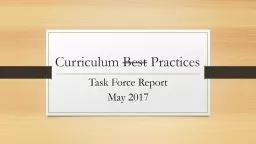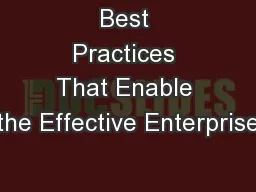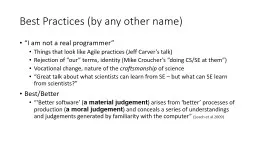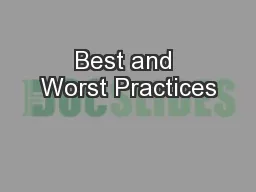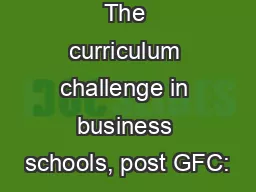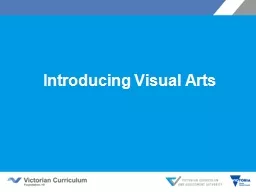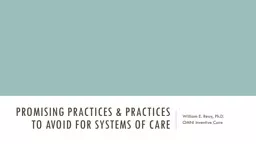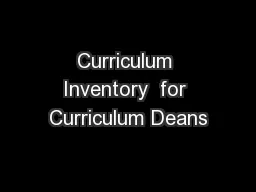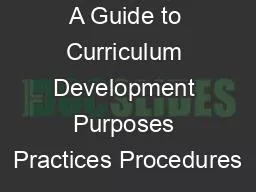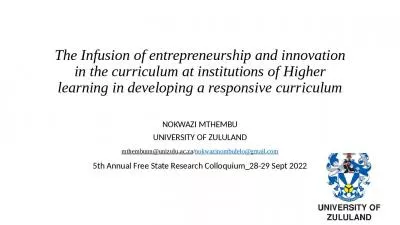PPT-Curriculum Best Practices
Author : test | Published Date : 2018-03-15
Task Force Report May 2017 Task Force Members Manal Ahmidouch 17 Christy Buchanan Psychology Sr Associate Dean Sherri Clark Anthropology Drew Finley 19 Jay Ford
Presentation Embed Code
Download Presentation
Download Presentation The PPT/PDF document "Curriculum Best Practices" is the property of its rightful owner. Permission is granted to download and print the materials on this website for personal, non-commercial use only, and to display it on your personal computer provided you do not modify the materials and that you retain all copyright notices contained in the materials. By downloading content from our website, you accept the terms of this agreement.
Curriculum Best Practices: Transcript
Download Rules Of Document
"Curriculum Best Practices"The content belongs to its owner. You may download and print it for personal use, without modification, and keep all copyright notices. By downloading, you agree to these terms.
Related Documents

